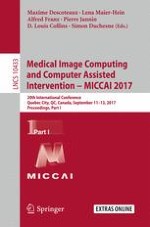2017 | Supplement | Buchkapitel
Learning Deep Features for Automated Placement of Correspondence Points on Ensembles of Complex Shapes
verfasst von : Praful Agrawal, Ross T. Whitaker, Shireen Y. Elhabian
Erschienen in: Medical Image Computing and Computer Assisted Intervention − MICCAI 2017
Aktivieren Sie unsere intelligente Suche, um passende Fachinhalte oder Patente zu finden.
Wählen Sie Textabschnitte aus um mit Künstlicher Intelligenz passenden Patente zu finden. powered by
Markieren Sie Textabschnitte, um KI-gestützt weitere passende Inhalte zu finden. powered by
